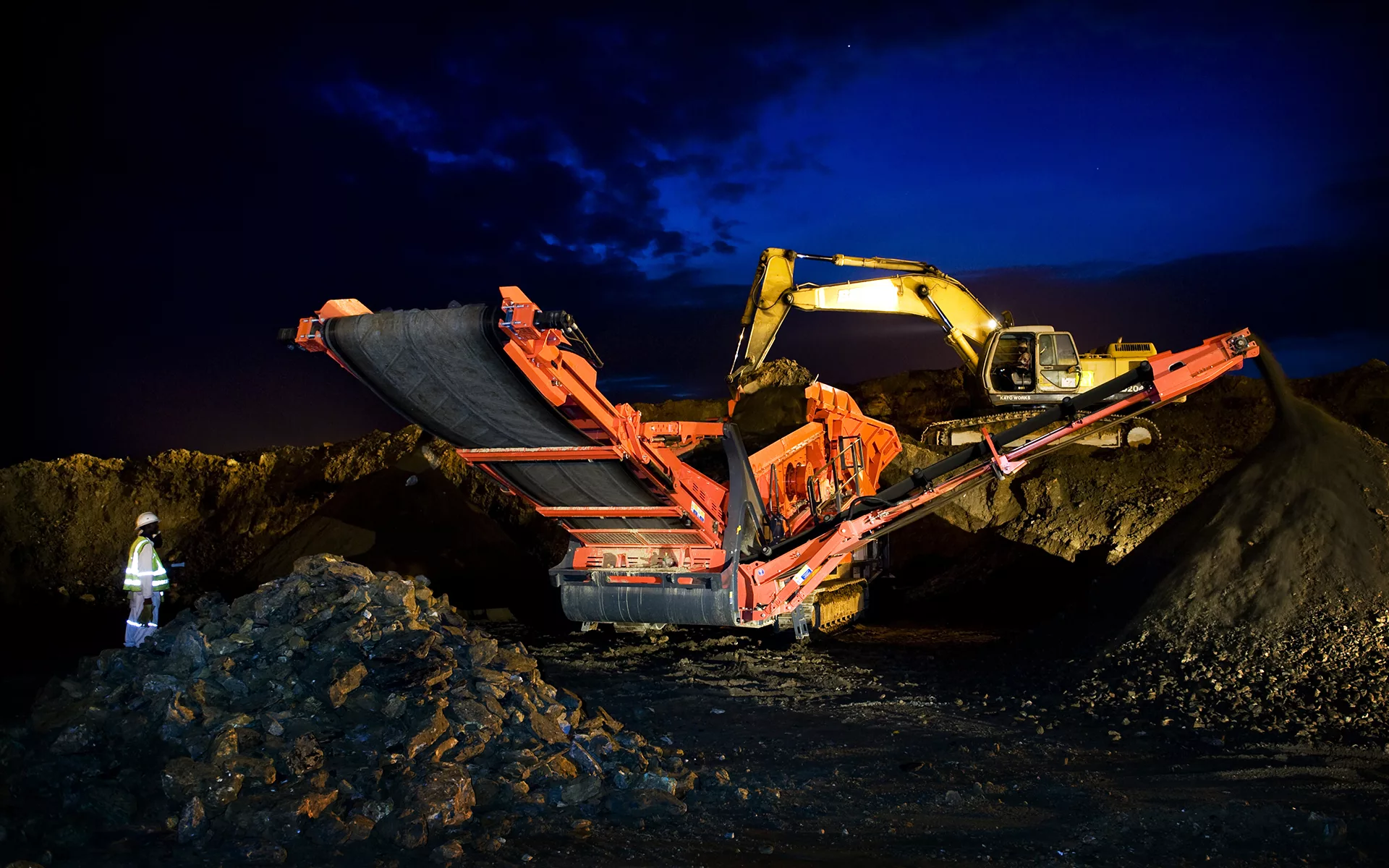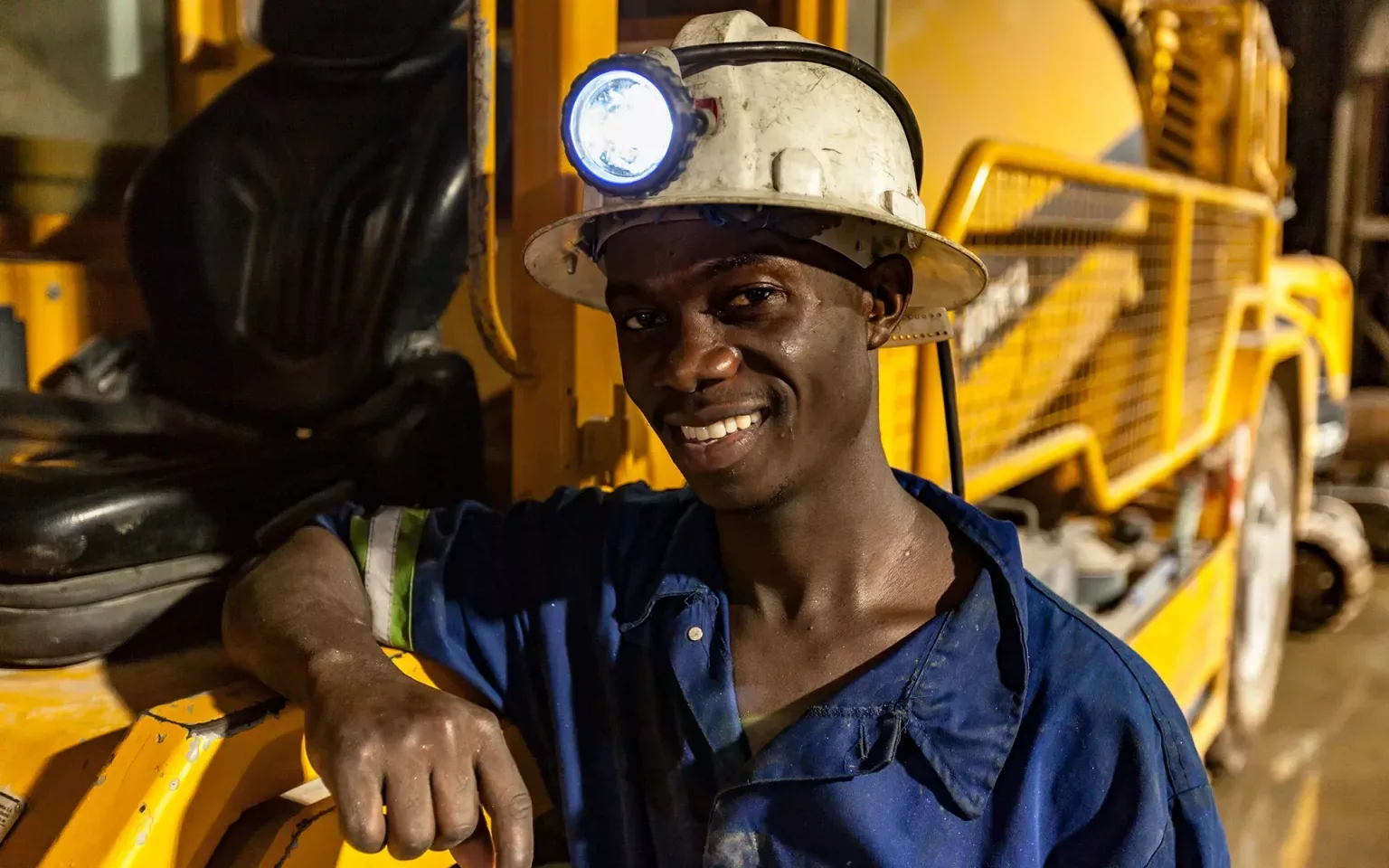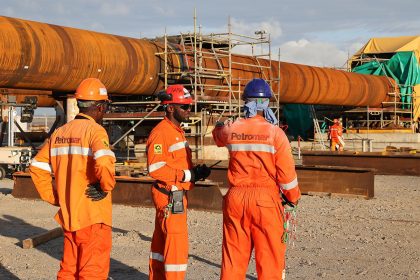As Zambia seeks to increase domestic copper production, we look at what fresh funding and infrastructure investments mean for Mopani Copper Mines Plc and the nation.
REVITALISING THE RED METAL
One of the most versatile materials on the planet, copper dates back more than 10,000 years.
Humanity’s oldest metal continues to be the go-to choice for a variety of domestic, industrial, and high-tech applications today, owing to its high ductility, malleability, thermal and electrical conductivity as well as its resistance to corrosion.
Copper is thus an essential element of everyday life, a proven plumbing and construction material that is used throughout homes, hospitals, public transport, office spaces, and even renewable energy sources such as solar panels and wind turbines.
In Zambia, Africa’s second-largest producer of copper and a country highly dependent on mining, President Hakainde Hichilema has set ambitious copper production targets since he came to power in August 2021, efforts that are expected to have a positive impact on the country’s overall economic growth.
Seeking to boost copper production to three million tonnes per annum (Mtpa) by 2032, up significantly from the current levels of around 850,000 Mtpa, his government has now sourced the funds to increase output at one of Zambia’s largest mining firms, Mopani Copper Mines Plc (Mopani).
A multi-faceted mining investment with operations in the Kitwe and Mufulira districts, Mopani is considered a critical asset for the Zambian copperbelt. The company’s operations encompass the entire chain of copper production, from extracting the ore underground to concentrating, smelting, refining and packaging the red metal for export.
The funding sourced for Mopani is one of the steps being taken by the Zambian government to address the challenges facing the industry, such as declining copper prices, high production costs and labour disputes.
It represents a positive development for the mining sector and the country’s economy, with Mopani one of the region’s largest employers whose success is critical to the livelihoods of thousands in the area.
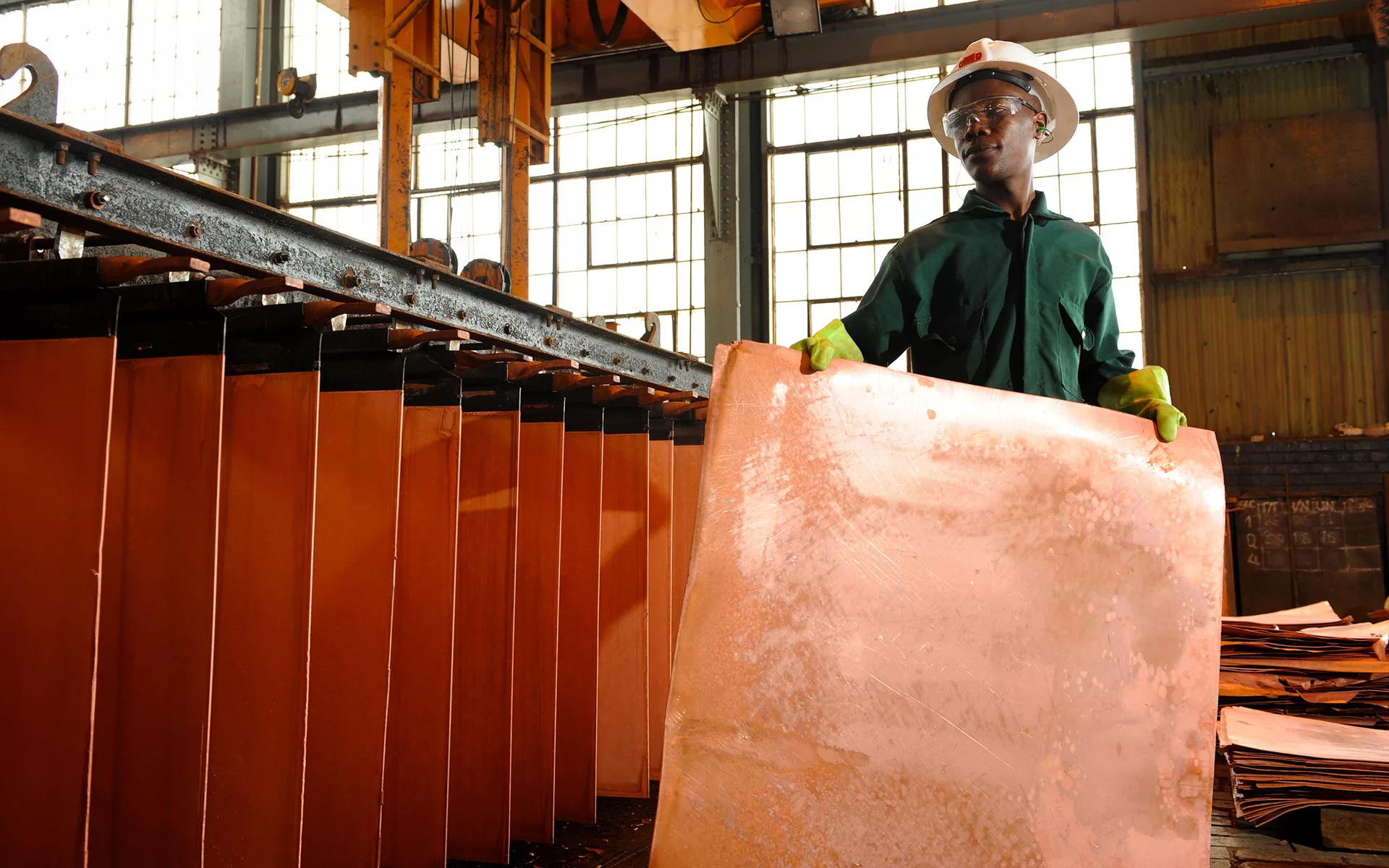
DEEP SHAFT UPGRADES
In the same year that Hichilema became the seventh President of Zambia, ZCCM Investment Holdings Plc (ZCCM-IH), a diversified mining investments and operations company, assumed 100 percent ownership of Mopani.
With a rich history in mining and processing that dates back to the 1930s, Mopani’s assets in Kitwe and Mufulira include underground mines, concentrators, a smelter and a refinery.
People are Mopani’s most important asset and the founding pillar of the company’s future success, without whom it cannot achieve its vision of becoming a world class mining operation delivering superior value to all stakeholders.
In keeping with this bold vision, Mopani’s infrastructure continues to be upgraded through investment in new technologies to increase production and improve efficiencies.
The new infrastructure includes three deep shafts – Synclinorium, Mindola and Henderson – which were sunk and equipped between 2014 and 2021 to replace the aging infrastructure at both the Nkana and Mufulira mine sites.
By replacing the existing shafts, Mopani will be able to access ore reserves at a greater depth, increase hoist production capacity, and reduce the cost of production.
As a result, the Synclinorium and Mindola deep shafts at the Nkana mine, and the Henderson shaft at the Mufulira mine, are expected to extend the life of the mine by over 25 years, improve production efficiencies and safeguard existing jobs, while guaranteeing Mopani’s continued contribution to growing the Zambian economy.
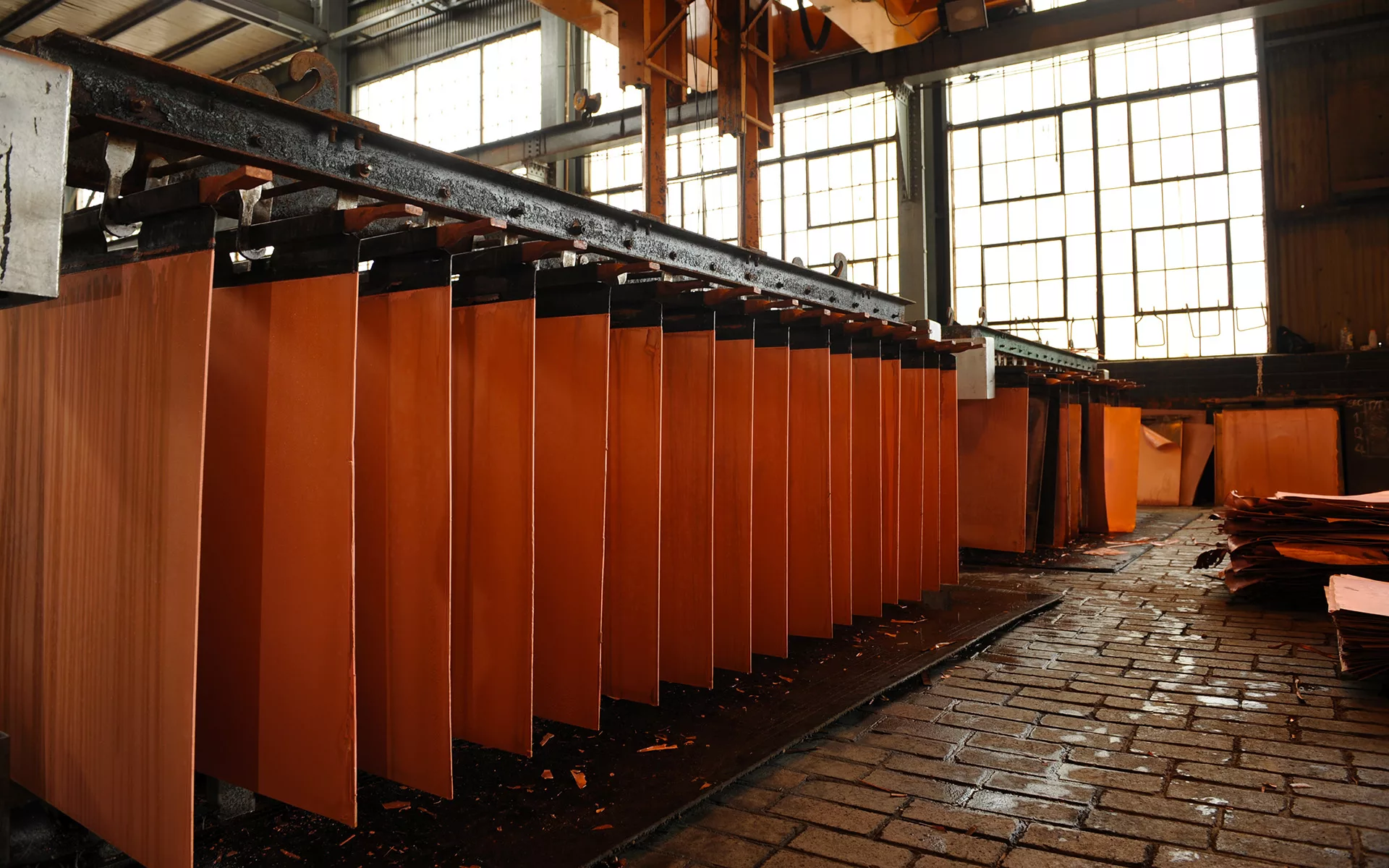
CONCENTRATOR INVESTMENT
Mopani also operates three concentrators, two at the Nkana mine in Kitwe and one at the Mufulira mine.
Ahead of the fresh funding secured this year for Mopani, the new USD$220 million Nkana Synclinorium concentrator in Kitwe was commissioned in March 2022 along with further new equipment, and is expected to improve both recoveries and production efficiencies.
More specifically, the state of the art automated concentrating facility will improve concentrate grades from 23 percent to 28 percent, copper recoveries from 89 percent to 94 percent, and concentrator capacity to 4.2 Mtpa of ore milled to support new shafts production.
It features a plethora of technologies, including concentrate regrind to improve final concentrate grades, two Jameson cleaners, Larox pressure filtration, sampler design to facilitate full metal accounting, and an on-stream analyser system.
The old concentrator, operational since the 1930s, needed upgrading to a new and modern uprated facility to handle the increased production volume from the newly commissioned Synclinorium shaft and has since been placed under care and maintenance.
Copper concentrates from the new Nkana Synclinorium concentrator are trucked to Mufulira, and together with those from the Mufulira concentrator, are fed into the smelter at the mine site for smelting and processing to produce copper anodes.
IMPROVING PRODUCTION
The future of Mopani lies in expansion projects such as the Synclinorium concentrator and three new deep shafts, which the company has been undertaking since 2013 with a view to extending the lifespan of the mine.
Mopani’s desire is to continue investing in infrastructure development, to cement itself as a world class and proudly Zambian mining operation.
The outlook for 2023 and beyond remains positive for Mopani, with copper prices projected to hold in the short to medium term mainly due to expected high demand for the metal in the solar and electric vehicle (EV) industries.
Mopani’s ore reserves also remain very attractive, even before considering further exploration, and once the three key shaft sinking projects at Synclinorium, Mindola and Mufulira are complete and operating at full production capacity, the company’s full potential will be unlocked whilst its production and financial performance will be completely transformed.
Now these projects have been fully commissioned, the company is confident that its production levels, efficiencies, safety, and the life of the mine will see significant improvements upon completion in line with the government’s explicit determination to increase copper output.
Bolstered by fresh investment, Mopani is optimistically looking forward to the fruition of the three new shafts, as well as the newly completed Synclinorium concentrator, to improve copper production in Zambia.
